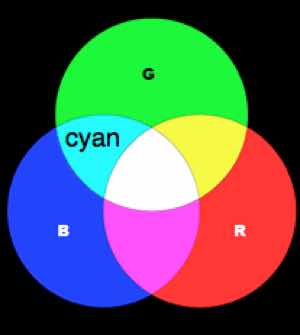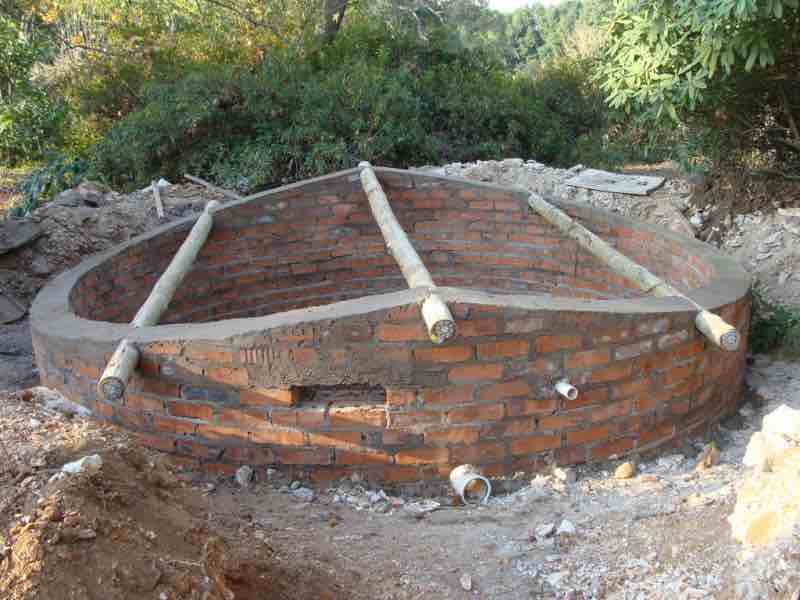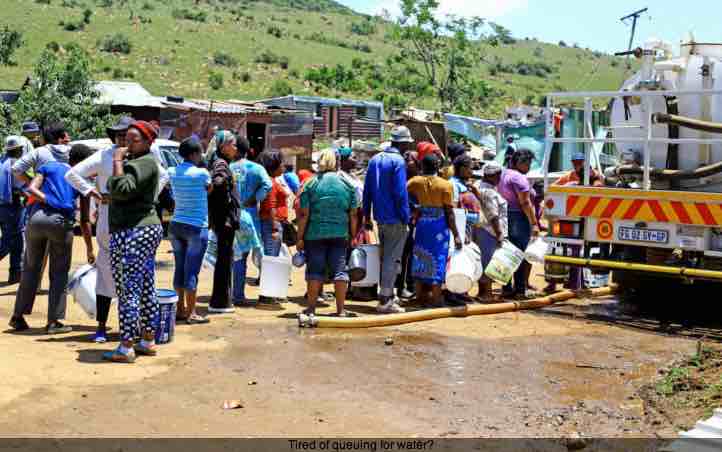| Back to Back Issues Page |
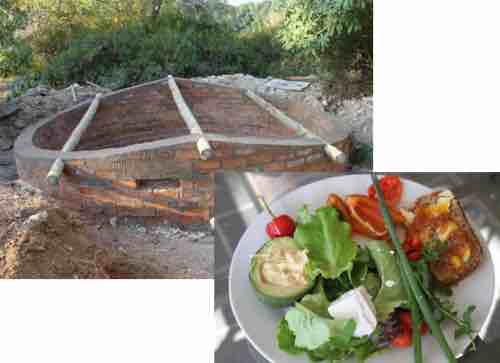 |
|
Microplastics from our water March 31, 2021 |
DearMicroplastics from our waterMicroplastics from our water are being found in the filtering organs of the body. Greetings from Bernard Preston to this sixteenth email about creating a Cyan Zone at your home. Caring not only for your own family, as they do in Blue Zones but also for the planet, a green issue. A 7 minute read.
Continuing on with the water storage theme from last month we look now at the effect that plastic in our oceans and lakes is having directly on our own well-being. As we all know only too well malignant tumours and autoimmune diseases have become the norm in the last fifty years. There is no one single cause obviously but microplastics from our water is certainly one of them. Filtering organs of the bodyThere are four major filtering organs of the body; the spleen, lungs and kidneys. The liver is also involved. They process the lymph, air that we breathe and blood, removing foreign particles and pathogens.Researchers from Arizona State University's centre for environmental health engineering have examined these organs from cadavers; disturbingly they have found particles of plastic in every single one of them. Their concerns cover three major issues. Firstly the plastic itself is a foreign chemical to the body; an immune reaction is likely. Finding particles deposited deep in our organs is a great worry. Secondly other toxic chemicals are often attached to the plastic and will create their own concerns. And thirdly Dr Rolf Halden points out that microscopic plastic particles act as an irritant in the same way that asbestos does, leading to inflammation and then malignant tumours.
A credit card weighs about 5 grams
That is the weight and size of a credit card; every week. Absorbed into the bloodDr Halden's team were looking for microscopic particles of plastic, so small that they could not be seen; but were absorbed from the gut into the blood stream.They are 50 times smaller than the thickness of a hair having a diameter of 1 micron. From there they are carried to the filtering organs where they lodge, releasing their toxic chemicals and physically irritating the tissues; causing inflammation and eventually a tumour.
From the air we breatheAnyone living and working in an industrial area is obviously constantly exposed not only to plastic but other chemicals from the air they breathe; they are filtered out in the lungs. Apart from the damage done there, they are also find their way into the blood stream and are carried to every part of the body.From the water we drinkThese microscopic particles of plastic are so small they are carried by the winds high up in the stratosphere, raining down on the ground and into the water systems of the world; we simply cannot escape them.From the food we eatIt's long been known that plastic is embedded deep in the flesh of fish swimming in a polluted sea; and new research published in the journal Environmental Science and Technology has confirmed finding it in many other sea foods such as oysters and prawns.In the salt we add to our food. TerrifiedWe humans are terrified by diseases that kill us quickly. We rapidly will change our behaviour when faced with possible infection by the coronavirus or meningitis, for example; but are quite unconcerned by those that slowly yet insidiously undermine our well-being.
Microplastics from our water and pesticides, all unseen on our food and in what we drink, give us no sleepless nights. South AfricaSouth Africa is a country of extreme water shortages frequently in many parts. It's only a four years since Capetonians were allowed only 50 litres per day for nearly a year. The economic impact with loss of jobs in agriculture and the hospitality industry was astronomical.The Eastern Cape is currently in the midst of a similar crisis. I have approached many scientists, politicians and others about the merits of harvesting and storing rainwater underground; interest has been close to zero. It does not surprise me that reaching a politician's reason often seems impossible without losing your own; but I'm seriously saddened by water scientists who poo-poo the concept of harvesting and storing rainwater for our homes and gardens. "A committee is a cul de-sac down which ideas are lured, and then quietly strangled."
— SIR BARNETT COCKS
But others are totally skeptical of the safety of water that is not chlorinated. After nine years of drinking this unfiltered I have finally succumbed to the strong opinions of family and put in a filtration system with a UV lamp to sterilise the water. I wager that very little plastic finds its way into the reservoir from dust and rain, far from industrial effluent where we live; but certainly there is some, such is the extent of pollution. Much of my acquiesce to the pressure to sterilise our water is from recognising that the filters will remove any plastic. In any case, with or without filters it will be a small fraction compared to that in municipal water from our polluted rivers and dams. We avoid bottled water.
"According to research conducted by Orb Media, 93% of the 11 bottled water brands sampled from 9 countries, showed traces of microplastics. Nestle Pure Life was the worst by far. On average, there were 325 plastic particles found in every litre of bottled water sold." how-safe-is-our-drinking-water.html 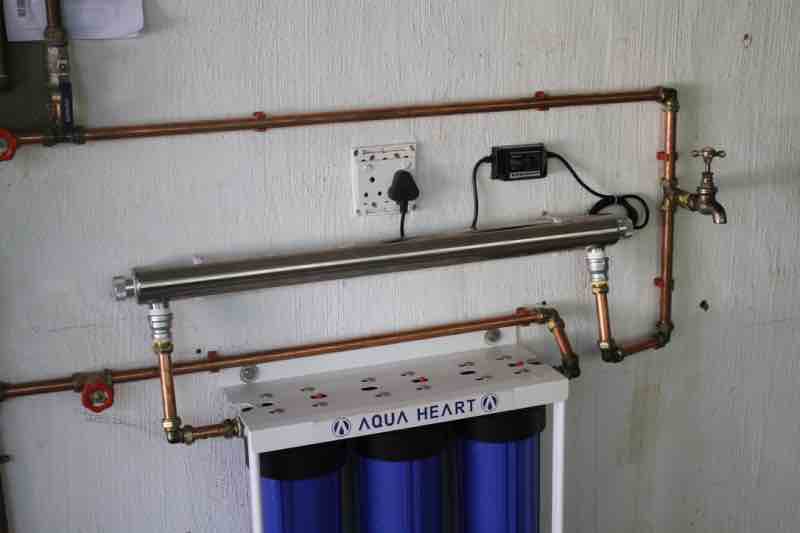
This system contains two paper cartridges and an activated charcoal filter; in addition, the sterilising UV lamp. What's to be done?In the short term the only simple solution is to filter our drink; it may not remove all the nanoparticles of plastic from our water, but it will certainly help.This filter that we use, for example, has a pore size of one micron; it will remove most of the plastic in our rainwater, such that there is. We recommend not storing water in plastic for any length of time.
"On the outskirts of every agony sits some observant fellow who points."
- Virginia Woolf
Is the photograph above a phantom, or reality? We are having far more difficulty dealing with the latter, and quite unconcerned about the unknown and unseen plastic in our municipal and bottled water. Which of the extremes is more dangerous? Water tainted with plastic and chlorine residues, or that which may contain hidden germs? Each of us must decide for ourselves.
Reverse osmosisReverse osmosis on a small home scale is a consideration; it will remove everything from the water. Unfortunately it also removes all minerals.On a national scale from seawater, it is massively expensive, and only for those wealthy countries with cheap electricity. It is certainly not an option in South Africa, except in the minds of high-flying politicians who are of their sense bereft. If they played bridge they would know better! To sum upI believe that in the future we may find that water from the diminishing reservoirs of the world may increasingly be reserved for agriculture and industry. It will again be up to us to harvest and store the rain for our homes.Depending on where you live, rainwater will in any case be far cleaner than that from polluted dams and recycled sewerage; and cheaper. Our reservoir has paid itself off many times over. Having access to an unlimited water supply for home and garden for most of the year is in itself a great blessing. We try not to become neurotic about such things, but those that we can change, we do. Caring for yourself, for the family and protecting Mother Earth is our slogan; create a mini cyan zone in your space. We have found it enormously satisfying and are absolutely certain it is the core reason that in our eighth decade we need to take absolutely no medication.
"It is better to understand little than to misunderstand a lot." — ANATOLE FRANCE Next monthNext month we continue to look at the small things we can do to protect both ourselves and the planet from the ravages of disease and pollution.
Till next month, Bernie
Create a cyan zone at your homeClick here to return to the home page and subscribe to this newsletter, if you have not already done so. Care for the world and look after your family.It is simple to unsubscribe if you later find it not relevant. Don't spam, but please forward to a few selected friends who you think might be interested.
* Wear your clothes out * Comfort foods * Create a bee-friendly environment * Go to bed slightly hungry * Keep bees * Blue zone folk are religious * Reduce plastic waste * Family is important * What can go in compost? * Grow broad beans for longevity * Harvest and store sunshine * Blue zone exercise * Harvest and store your rainwater *Create a cyan zone at your home |
| Back to Back Issues Page |
